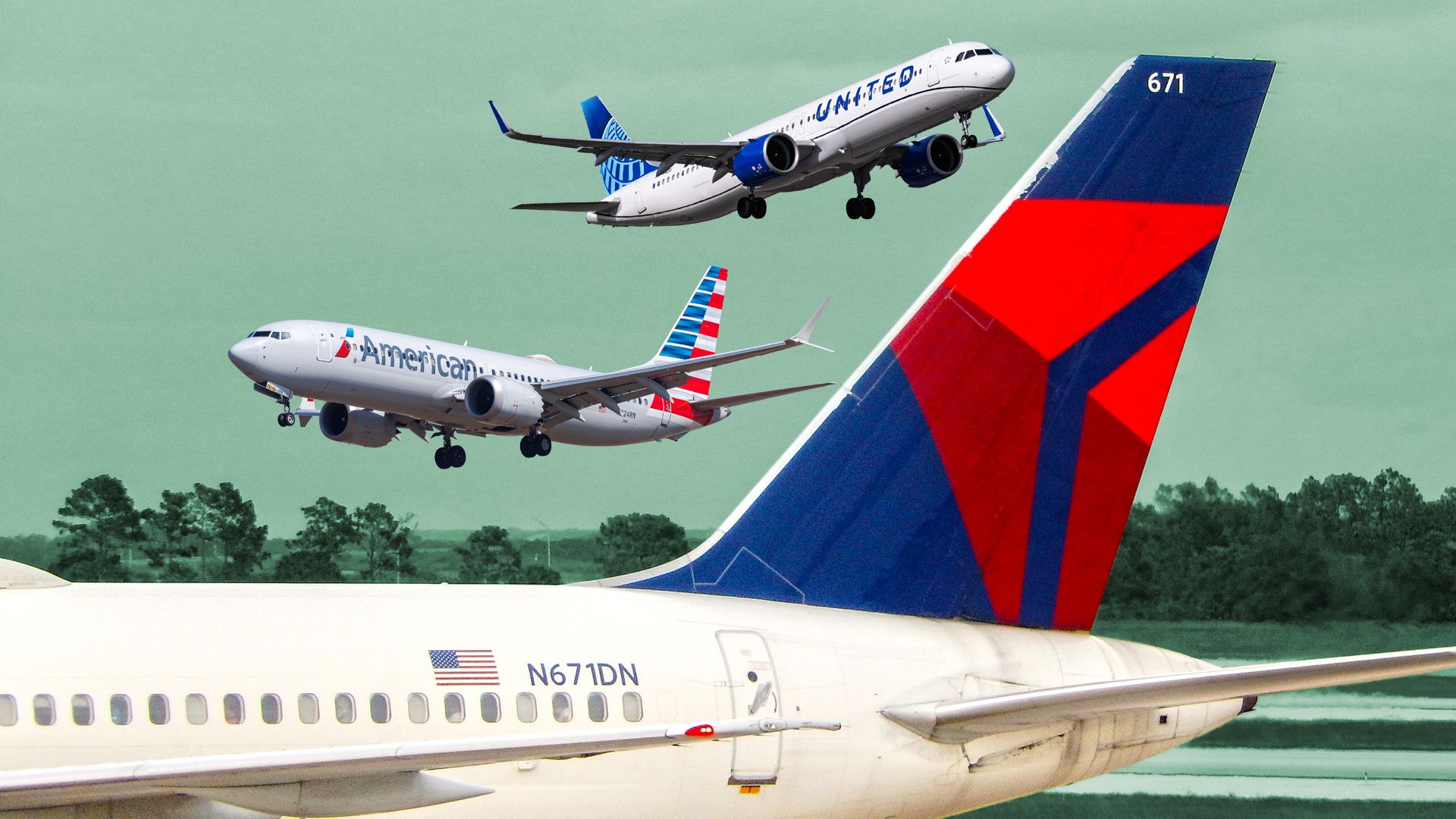Business
United Airlines Tops Global Charts with Highest Pilot Numbers

The aviation industry is witnessing a shift in its landscape as United Airlines emerges as the largest airline in the world by the number of pilots employed. With a workforce of 17,813 professional pilots and flight crew members, United Airlines leads the sector, closely followed by Delta Air Lines, which employs 17,347 pilots. This information highlights the significance of pilot employment in determining an airline’s size and operational capacity.
Leading Airlines by Employment Metrics
In examining the metrics that define the largest airlines globally, the Big Three US-based carriers—United Airlines, American Airlines, and Delta Air Lines—consistently dominate the rankings. According to multiple sources, including the International Air Transport Association (IATA), United Airlines excels in several categories, including the most available seat miles (ASMs) and the largest mainline aircraft fleet. The rankings for 2024 show that United Airlines is a leader in the following categories:
– Most available seat miles (ASMs): United Airlines
– Most revenue seat miles (RPMs): United Airlines
– Largest mainline aircraft fleet: United Airlines
– Most mainline employees: United Airlines
– Most destinations served: United Airlines
– Most passengers carried: American Airlines
– Most total employees: American Airlines
– Most freight carried in tonne-kilometers: FedEx Express
– Most countries served: Turkish Airlines
This extensive presence in various metrics underscores the operational strength of these airlines, particularly United Airlines, which not only leads in pilot employment but also in overall capacity and reach.
Impact of the COVID-19 Era on Pilot Employment
The global pandemic significantly affected pilot hiring practices, as many experienced pilots retired or left the profession amid changing employment conditions. According to the AOPA, the years 2020 to 2022 saw a marked decline in the number of active pilots, exacerbated by vaccine mandates imposed by major airlines. The impact of these changes created substantial gaps in the pilot workforce.
In response to the urgent need for new pilots, airlines have ramped up hiring efforts. The Future and Active Pilots Alliance (FAPA) reported that more than 13,000 new pilots were hired in 2022, followed by over 12,000 in 2023. The data from FAPA illustrates the scale of this hiring surge, with United Airlines leading the way. For instance, from January to December 2024, United Airlines hired a total of 1,035 pilots.
The hiring trends reveal a complex landscape. As of May, the median salary for airline pilots stood at $226,600, indicating a significant investment in pilot wages. With an annual expenditure surpassing $3.5 billion on pilot salaries alone, United Airlines has positioned itself as a major player in the industry.
The aging pilot workforce poses further challenges. Around 42,000 airline pilots are expected to retire in the next 15 years, creating a persistent demand for new talent. Tim Genc, executive editor of FAPA, noted that the anticipated peak in retirements has been revised to 2031, extending the window for recruitment.
In contrast, hiring rates have leveled off recently, with only 4,834 pilots hired in 2024. This figure aligns more closely with a balanced market, suggesting that while demand for air travel remains strong, the hiring boom may be stabilizing.
The ongoing need for pilots remains critical as the aviation sector rebounds. Demand for travel has surged post-pandemic, compelling airlines to consider expansion and recruitment strategies actively.
Union Initiatives and Future Prospects
Both United Airlines and Delta Air Lines are focusing on pilot welfare and job satisfaction through union initiatives. United Airlines’ Master Executive Council (MEC) has launched a ‘Union First’ campaign aimed at addressing crucial issues such as safety and scheduling. The council emphasized their commitment to representing pilots, stating, “United pilots set the bar for aviation safety, professionalism, and unity.”
Delta Air Lines has similarly prioritized pilot interests following the ratification of an ‘industry-leading’ contract in March 2023. The Delta MEC is actively engaged in ensuring compliance with this agreement, reinforcing their commitment to pilot advocacy.
In terms of operations, both United and Delta Airlines are robust. United Airlines operates more than 4,500 daily flights, while Delta manages over 4,000. Each airline serves hundreds of destination cities across numerous continents, demonstrating their extensive reach in global air travel.
As the industry recovers and evolves, the outlook for aspiring pilots remains promising, provided that unions continue to support their members effectively. The resilience of the global airline economy, despite challenges, suggests that opportunities for new pilots will persist.
In summary, the aviation industry is navigating a complex landscape marked by recovery and growth. With United Airlines at the forefront of pilot employment, the sector’s future appears to hinge on effective recruitment strategies and the ability to adapt to evolving market demands. The ongoing efforts by airlines to address pilot welfare and employment conditions will undoubtedly shape the trajectory of the industry moving forward.
-

 Health2 months ago
Health2 months agoNeurologist Warns Excessive Use of Supplements Can Harm Brain
-

 Health2 months ago
Health2 months agoFiona Phillips’ Husband Shares Heartfelt Update on Her Alzheimer’s Journey
-

 Science4 days ago
Science4 days agoBrian Cox Addresses Claims of Alien Probe in 3I/ATLAS Discovery
-

 Science2 days ago
Science2 days agoNASA Investigates Unusual Comet 3I/ATLAS; New Findings Emerge
-

 World2 months ago
World2 months agoCole Palmer’s Cryptic Message to Kobbie Mainoo Following Loan Talks
-

 Entertainment3 months ago
Entertainment3 months agoEmmerdale Faces Tension as Dylan and April’s Lives Hang in the Balance
-

 Entertainment3 months ago
Entertainment3 months agoLove Island Star Toni Laite’s Mother Expresses Disappointment Over Coupling Decision
-

 Entertainment3 months ago
Entertainment3 months agoKerry Katona Discusses Future Baby Plans and Brian McFadden’s Wedding
-

 Entertainment2 months ago
Entertainment2 months agoMajor Cast Changes at Coronation Street: Exits and Returns in 2025
-

 Lifestyle2 months ago
Lifestyle2 months agoEngland Flags Spark Controversy This Summer: A Cultural Debate
-

 World2 months ago
World2 months agoCoronation Street’s Asha Alahan Faces Heartbreaking Assault
-

 Entertainment2 months ago
Entertainment2 months agoMasterChef Faces Turmoil as Tom Kerridge Withdraws from Hosting Deal









